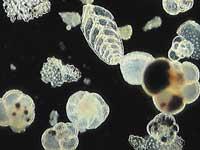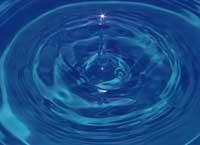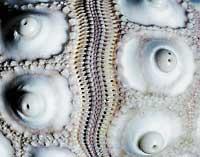Composition of variable sea water
2001/11/05 Roa Zubia, Guillermo - Elhuyar Zientzia
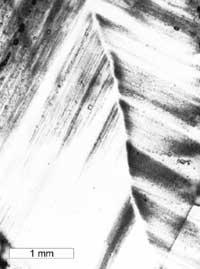
The study of the water drops captured in the salt crystals long ago allows to analyze the changes in the chemical composition of the sea.
The chemical composition of the limestone varies depending on the age of the rock. Scientists realized this in the 1980s. The geologist Lawrence Hardie explained this change: the materials that emerge and bury in the limits between tectonic plates alter the composition of sea water. For example, it reduces the amount of magnesium and increases calcium.
However, Hardie's idea was only a hypothesis and was not demonstrated. In the issue of November 2 of the journal Science, an experiment that confirms this hypothesis is realized. The salt crystals that form in the sea have holes that are usually filled with crystals. Geologists have analysed these drops of water in different parts of the world.
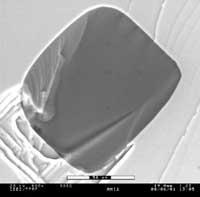
The water drops were about 30 micrometers. Therefore, its small size of extraction allowed to freeze the fluid, cut it into plates and analyze it by electronic microscope. The proportion of magnesium calcium in the drops of all parts of the world was the same in samples of the same age. But this proportion depends on the time when the drop was trapped.
The chemical composition of the sea can influence the evolution of beings. For example, during the Cretaceous period, planktonic algae absorbing calcium multiplied enormously, while when the situation changed the amount decreased.

Gai honi buruzko eduki gehiago
Elhuyarrek garatutako teknologia




